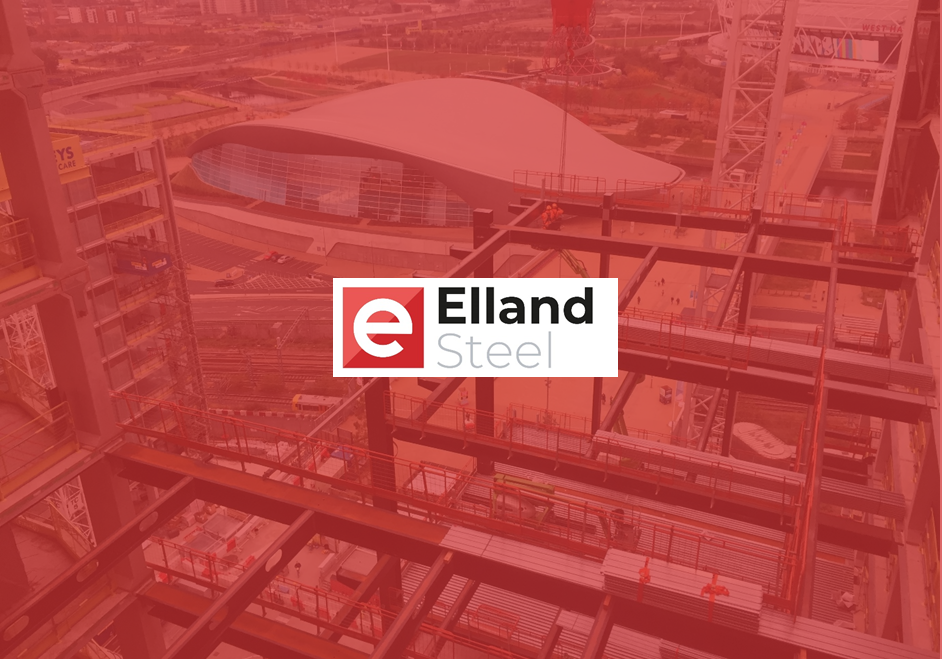Steel recyclability means it supports sustainability – but good practice in its usage is vital too:
Steel is an inherently sustainable construction material, it can be 99% recycled to form an entirely new section. Steel recycling on its own is not sufficient, responsible and considerate methods of design, construction and also deconstruction are necessary as well.
New construction projects are becoming increasingly driven or influenced by sustainability, with main clients placing a greater emphasis on ‘green’ projects. So responsibility is as important as recyclability on a development – such as considering the whole lifecycle of both the building and its materials.
While steel’s recyclability has made it a good choice for sustainable construction, its ability to be repurposed or reused is an attribute not to be overlooked.
Just as real progress has been made in design for manufacture, we must now make progress on design for end-of-life, whether that’s through reusing resources or remodelling buildings. If the whole lifecycle assessment of materials is considered alongside the lifecycle of a building, structures can be designed and erected with their ability to be dismantled with repurposing in mind.
Lifecycle assessments need to be thorough, considering not only the environmental impact of the production and construction processes for materials, but also their ongoing usage, end-of-life and potential for life beyond first purpose. These often find that steel structures deliver ongoing environmental value as they can be repurposed or dismantled, reused and recycled.
While end-of-life and ongoing usage is not yet mandatory in the construction sector, it is likely to become standardised and there is a growing appreciation of its value. So it is helpful that completing accurate lifecycle assessments has become easier as more and more data is gathered and made available. Module D, which takes into account material reuse and recycling cannot be disregarded in lifecycle assessments.
As well as being appealing to main clients, lifecycle assessments are another tool to help achieve net zero targets.
Achieving net zero targets
Global targets set for achieving sustainability in construction are ambitious but achievable. The World Green Building Council has a target of 40% reduction in embodied carbon, or the ‘carbon footprint’, of new buildings or infrastructure by 2030, with a net zero to follow by 2050.
To achieve this, some new definitions have been set – for example, an approach of ‘cradle to cradle’ is now favoured over ‘cradle to gate’. The latter required the industry to only be accountable for carbon emissions created in the production and construction stage of a development. Building on that, the new approach seeks to take into account the ongoing emissions of a development, by considering usage of the building, such as energy efficiency, and then reuse or recycling of materials at end-of-life – the same as the lifecycle assessment.
The steel sector’s approach of ‘cradle to cradle’ considers if a material can be useful over and above simply being reduced or recycled once its original use has ended – particularly given the process of recycling has energy and environmental impacts of its own.
Studies and surveys have found that while almost 100% of structural steel is recovered in demolition, only between 7-11% is reused, while the remainder is recycled. Of the former, this can be through reuse, relocation or reclamation. Reuse on the same site, ‘in-situ reuse’, is most common, as part of refurbishment of a development for example. Deconstruction ready for re-erection elsewhere is a reuse method often seen in the agricultural sector for large sheds. Additionally, individual components or elements of dismantled steel structures can be selected and reclaimed for reuse, such as London’s 2012 Olympic stadium using surplus steel from the offshore industry.
Although 75% of all steel ever produced is still in service through reuse or recycling, the only reason all steel on the market today isn’t made from 100% recycled material is because demand is higher than the supply of waste steel can keep up with.
Recognising steel’s sustainability credentials
Of course, steel’s recyclability is only one of the ways in which it can be the most sustainable choice. In addition, steel boasts a number of qualities which make it inherently ‘green’:
- Durability – steel’s durability means steel structures last longer, meaning fewer raw materials will need to be used overall;
- Lightness – the lightness of a steel structure means not only that ‘less is more’, with less material needed to achieve height or strength, but new buildings do not require extensive foundations, saving on groundworks and disruption;
- Predictability and precision – because steel structures can be precision engineered, pre-fabricated and even trial assembled off-site they can be quickly erected with lower levels of pollution from on-site machinery and ensuring waste-free assembly;
- Versatility – the ability to design steel frames that can be adapted or modified to suit a building’s changing needs or usage mean any changes can be made with minimal disruption, cost and environmental impact;
- Accountability – the BCSA’s Sustainability Charter means responsible steelwork contractors are making themselves accountable for delivering sustainable construction and achieving net zero
Adding to these keys points, to deliver a truly sustainable development, the end of a building’s life should be considered at the very start of its conception, design and construction. Designers who choose construction materials with the deconstruction process in mind can then ensure ongoing environmental benefits.
Steel will offer ongoing sustainability benefits to a building – even at its end-of-life. See our article: Reaching net zero using whole lifecycle assessments.

